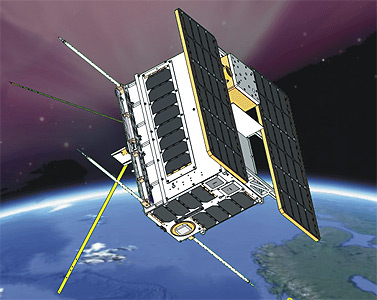NORSAT 1 (original) (raw)

NORSAT 1 [UTIAS]
The Norsk Romsenter (Norwegian Space Centre) signed a contract in June 2013 with UTIAS (University of Toronto, Institute for Aerospace Studies) for the construction of the NORSAT 1 microsatellite. For less than 20 millon NOK, the University of Toronto will construct the platform for the satellite and integrate the payloads before launch.
The new satellite will be built to investigate solar radiation, space weather and detect ship traffic. The launch is planned 2016. The Norwegian Space Centre will coordinate the development and the integration of the instruments for the new satellite platform. The new satellite will also have its mission control in Norway.
The instruments planned for NORSAT-1 require a larger satellite platform than that of the Norwegian satellite AISSat-1, launched in July 2010. NORSAT-1 will therfore measure 20 × 20 × 40 cm, whereas AISSat-1 measures 20 × 20 × 20 cm.
NORSAT-1 carries three instuments:
- An Automatic Identification System (AIS) receiver to acquire messages from maritime vessels;
- A Langmuir Probe instrument, intended to measure ambient space plasma characteristics; and
- A Compact Lightweight Absolute Radiometer (CLARA), intended to observe total solar irradiation and variations over time.
NORSAT-1 will carry an AIS-receiver for performing ship detection from space. The new AIS-receiver will be more advanced and employed to test out new detection algorithms. This AIS-receiver will detect and track maritime traffic in Norwegian and international waters via the Automatic Identification System (AIS).
The instruments will cover several aspects of scientific research focusing on the sun, including measuring Total Solar Irradiation (TSI) with one instrument, and measuring electron plasma from the sun with a Langmuir probe (LP). The two instruments are being constructed by Norwegian and international research teams, and were chosen because they were the furthest along in their development process and fit the overall plans for the satellite best.
NORSAT-1 was launched to a polar orbit at approximately 600 kilometers height. It was to fly in April 2016 as a piggy-back payload on the Sentinel 1B mission on a Soyuz-ST-A Fregat-M rocket, but was removed from the launch due to a faulty monting bracket. A replacement launch later in 2016 is evaluated.